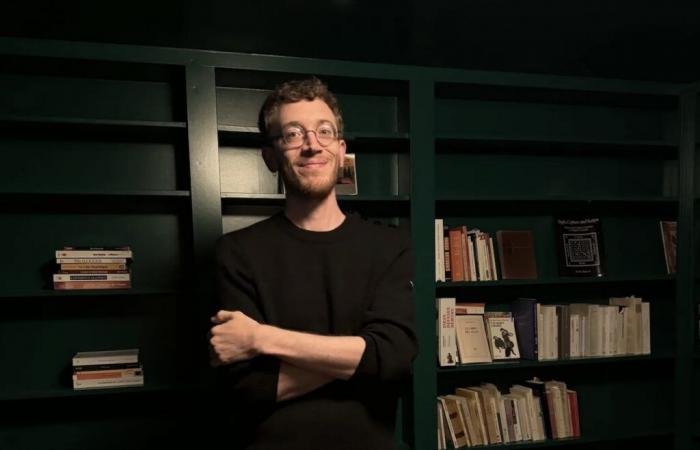Cow to get out of it? asks Romain Noël on the cusp of an extremely unique bookThe Great Affective Conspiracy. He cites Sarah Kofman there, signing a renewal of the philosopher’s work – Verdier reappears her Rue Ordener rue Labat. How do you get through it when the world is heading towards ruin, when you yourself are in complete collapse, after a romantic breakup?
The Great Affective Conspiracy born from this darkness, the mourning of love, the mourning of a harmoniously inhabited Earth, of a book impossible to write. The observation is clear, he opens the book: “I must admit that at one point, I got fed up with the theory, with its claim to change the world, when it is incapable of changing its own form, its own method, its own mode of expression. The story opens with a taste buds, exit self-fulfilling or comfortable theories, footnotes offering a reassuring and demonstrative framework. But it is not a question of noticing (the crises) or putting an end to them, stuck in a After impossible.
The taste buds is also the statement of a challenge (which one might think doomed to failure: Romain Noël strongly asserts that he is starting again where Roland Barthes or Sarah Kofman “were forced to stop” and he makes these ruptures the emerges from a renewal, from a new life : if Barthes was unable to complete Preparation of the novelRomain Noël takes the notion of preparation literally, in its culinary or magical sense. The notion becomes a potion, the rupture a threshold, chaos a form and a magic circle, of encounters, surprises and discoveries, taking the reader into a real sabbath, with witches-magicians, philters and dances.
In doing so, Romain Noël invents, he forges weapons and composes recipes, refuses the partition between theory and fiction, story and essay, he offers us a theoretical thrillerthe magical subtitle of this unclassifiable book (which the author himself defines as a “hybrid and potentially dysfunctional creature”). The theoretical thriller is the form to tell the pathocenean era where affects (tears, pleasure, pain, enjoyments) would no longer be constrained and silenced but cultivated, where the non-living would dialogue with the living, the dead with the present, animals and plants with humans.
Everything is in fact a dialogue in this book from the hopeless situation in which we think we are trapped: the theoretical part of the Great Affective ConspiracyIt unfolds in a narrative part, the fragments of this story respond to each other, the quotations (from memory and without reference) enter into a round. Something indescribable (if not by Romain Noël) is edified, in a waltz of a thousand beats as readers are invited to construct their own story: The Great Affective Conspiracy can be read continuously, page after page, from its beginning to its end but we can also choose to be the hero or heroine of this text, its narrator by making choices at each end of paragraph. Romain Noël programs and offers an infinite book, capable of a multitude of readings which each reinvents its subject. We go in search of a lost manuscript by Giordano Bruno, we meet artists, we get tattooed with the acronym of the GCA in Italy, we meet Kate Bush, Donna Haraway and Steve Reich, we cross rivers, wade in swamps and composts, we listen to music in open-air cathedrals, we reread and connect, we wander, we cross places and times, we no longer know where reality ends and fantasy begins.
Closing the book, properly bewitched, we wonder two things: if Romain Noël did not, in this astonishing first novel, invent the queer as a literary form, the trouble as a story — an absolute refusal of norms, genres and frameworks which cannot be decreed but is expressed through practice. And what this author will be able to propose next as this book imposes an absolute form.
Romain Noël, The Great Affective Conspiracy. A theoretical thrilleréditions du Seuil, “The Bookshop of the 21st century”, October 2024, 336 p., €22






